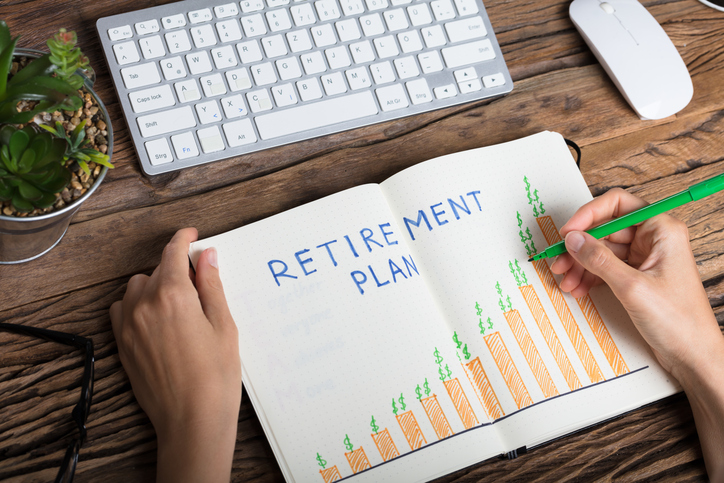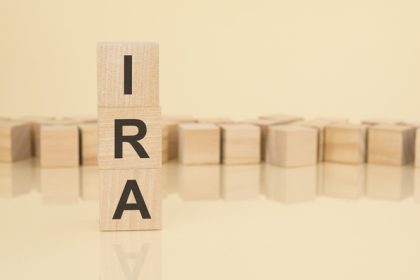At age 70, retirement is no longer a distant goal—it’s your current reality. Whether you’re newly retired or reevaluating your strategy, this is an important time to ensure your savings last. While there is no single best retirement portfolio for a 70-year-old, building a portfolio that suits your needs involves prioritizing income, minimizing risk and managing taxes. Your portfolio should reflect your lifestyle, health needs and long-term goals, all while preserving the wealth you’ve worked so hard to accumulate.
A financial advisor can help you review your portfolio, evaluate income options and adjust your strategy to fit your retirement needs.
Understanding Your Financial Picture at 70
Before adjusting your portfolio, take stock of your full financial situation. At this age, your focus should shift from accumulation to decumulation, meaning drawing from savings in a strategic, tax-efficient way. The following are some of the things you’ll want to take a closer look at:
- Assess income sources: This may include Social Security, pension benefits, annuities, rental income or part-time work.
- Estimate annual expenses: Annual expenses will vary from person to person but typically Include housing, medical and travel costs. Also make sure to account for inflation.
- Identify funding gaps: Determine how much income your portfolio must generate annually to provide adequate funding throughout retirement.
- Review required minimum distributions (RMDs): If you’re age 73 or older, RMDs will start draining tax-deferred accounts whether you need the money or not.
Goals for a Retirement Portfolio at Age 70
The investment goals at this stage are different from what they were when you were 40 or even 60. A sound retirement portfolio for a 70-year-old should be built around the following objectives:
- Sustainable income: Ensure you have regular payouts to cover living expenses.
- Capital preservation: Avoid excessive risk that could reduce your nest egg.
- Tax efficiency: Minimize tax liabilities from RMDs or investment gains.
- Inflation protection: Maintain purchasing power over 20-30 years.
- Healthcare preparedness: Account for potential long-term care costs or rising medical expenses.
- Estate planning: Structure assets to simplify wealth transfer in the future.
Ideal Asset Allocation at Age 70
You don’t need to eliminate all growth assets from your portfolio at 70, but you’ll likely want to shift to a more conservative allocation. A retirement portfolio for a 70-year-old typically leans toward income-generating and lower-risk investments. Here’s an example asset allocation for a 70 year old designed to preserve assets and generate income:
| Asset Class | Target Allocation |
| Bonds and fixed income | 45% |
| Dividend-paying stocks | 30% |
| Cash or CDs | 10% |
| REITs or alternatives | 10% |
| Growth equities | 5% |
This allocation maintains a stable income and offers some exposure to equities for growth while keeping volatility in check. The exact distribution, however, should reflect your income needs, longevity expectations and risk tolerance.
How to Generate Income From Your Portfolio
Generating steady income is a top priority for many retirees. Fortunately, there are multiple ways to do this without taking excessive risk, such as:
- Bond ladders: Staggered maturities help manage interest rate risk and provide consistent payouts
- Dividend-paying stocks: Blue-chip companies often offer stable income with moderate growth
- CDs and Treasury securities: Government-backed and low risk, ideal for short-term needs
- Annuities: Provide guaranteed income, though they reduce liquidity
- Systematic withdrawal plans: Strategies like the 4% rule or bucket strategy can structure withdrawals from various accounts
A well-diversified portfolio will draw income from multiple sources and reduce over-reliance on any one asset.
Tax Planning and RMD Strategies
Tax planning becomes critical in your 70s, especially with RMDs now required starting at age 73. Without a strategy, these mandatory withdrawals can spike your taxable income. The following are some strategies you might consider, depending on your situation and needs:
- Delay Roth withdrawals. Let tax-free Roth assets grow while using RMDs from traditional accounts.
- Use QCDs. Once RMDs begin, donate up to $100,000 annually from an IRA directly to charity tax-free using qualified charitable distributions (QCDs).
- Consider Roth conversions. If under RMD age, converting part of your traditional IRA to a Roth IRA may reduce future RMDs.
- Harvest losses or gains. Offsetting income or rebalancing your portfolio efficiently can help minimize tax exposure.
- Avoid stacking income. Coordinate withdrawals and Social Security to avoid Medicare IRMAA surcharges.
Managing Risk in Your 70s

Managing risk in your 70s focuses on preserving capital and maintaining stability. One effective approach is to rebalance your portfolio each year to restore target allocations and limit exposure to volatile assets. Reducing equity exposure may also be appropriate, especially if you hold higher-risk stocks or sector-specific funds that can fluctuate sharply.
Keeping one to three years of cash reserves available also ensures you won’t need to sell investments during a market downturn, giving you flexibility and peace of mind. At the same time, diversifying income streams can reduce reliance on market performance alone for withdrawals, creating a steadier financial foundation.
It’s also important to review insurance coverage, such as Medicare supplement plans or long-term care policies, which can help protect assets from unexpected healthcare costs.
Example 70-Year-Old Portfolio in Action
Let’s say you have a $750,000 retirement portfolio and need $40,000 annually on top of Social Security. A sample allocation could look like:
- $337,500 (45%) in bond funds or a bond ladder generating 3–4% income
- $225,000 (30%) in dividend-paying stocks with a 2–3% yield
- $75,000 (10%) in cash or short-term CDs for liquidity and emergencies
- $75,000 (10%) in REITs or alternatives for inflation protection
- $37,500 (5%) in growth stocks for potential capital appreciation
This approach aims to provide approximately $25,000–$30,000 in income annually through dividends and interest alone, with flexibility to draw additional funds as needed.
Considering a Financial Advisor
At age 70, working with a financial advisor can help you avoid costly mistakes and make the most of your retirement savings. An advisor can evaluate your withdrawal strategy and determine the most efficient sequence of accounts to draw from, while also ensuring that your RMDs are accurately calculated and taken on time. They can help optimize asset location by deciding which accounts should hold which types of investments, with the goal of maximizing growth and minimizing risk.
A skilled advisor can also implement tax strategies that reduce both income taxes and potential Medicare premium surcharges, giving you more control over your retirement income. Additionally, they can ensure your estate plan aligns with your investment plan, offering peace of mind for both you and your heirs.
Bottom Line

While there is no single best retirement portfolio at age 70, it’s important to keep a balance between income, preservation and flexibility. Your portfolio should reflect your spending needs, health and legacy goals. Whether you prefer a more conservative, bond-focused mix or maintain some exposure to equities, diversification and risk control remain central to long-term stability.
Retirement and Investment Tips
- A financial advisor can help you determine whether you have enough saved for retirement and recommend strategies to grow your nest egg. Finding a financial advisor doesn’t have to be hard. SmartAsset’s free tool matches you with vetted financial advisors who serve your area, and you can have a free introductory call with your advisor matches to decide which one you feel is right for you. If you’re ready to find an advisor who can help you achieve your financial goals, get started now.
- If you want to diversify your portfolio, here’s a roundup of 13 investments to consider.
Photo credit: ©iStock.com/Tom Merton, ©iStock.com/BrianAJackson, ©iStock.com/AndreyPopov
Read the full article here
















